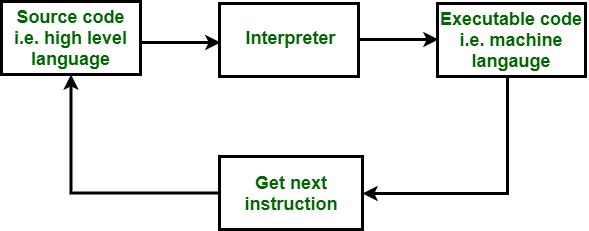1. 装配工:
一种汇编语言,基本上是助记符,如 GO、HALT、JUMP 和 NOT 代码,由编程语言翻译器(即Assembler )翻译成机器语言。汇编程序是以汇编语言为源代码,将其转换为计算机可以理解的位格式即机器语言的程序。例如 NASM 和 MASM。

2. 翻译:
解释器是一种将高级语言转换为位格式即机器语言的程序。解释器和编译器的函数相同,但解释器一次翻译一行并执行它。没有生成目标代码,因此每次必须运行程序时,首先要对其进行解释。

汇编器和解释器的区别:
| S.No. | Assembler | Interpreter |
|---|---|---|
| 1. | It converts low-level language to the machine language. | It converts high-level language to the machine language. |
| 2. | The program for an Assembler is written for particular hardware. | The program for an Interpreter is written for particular language. |
| 3. | It is one to one i.e. one instruction translates to only one instruction. | It is one to many i.e. one instruction translates to many instruction. |
| 4. | It translates entire program before running. | It translates program instructions line by line. |
| 5. | Errors are displayed before program is running. | Errors are displayed for the every interpreted instruction (if any). |
| 6. | It is used only one time to create an executable file. | It is used everytime when the program is running. |
| 7. | Requirement of memory is less. | Requirement of memory is more. |
| 8. | Programming language that it convert is Assembly language. | Programming language that it convert are PHP, Python, Perl, Ruby. |